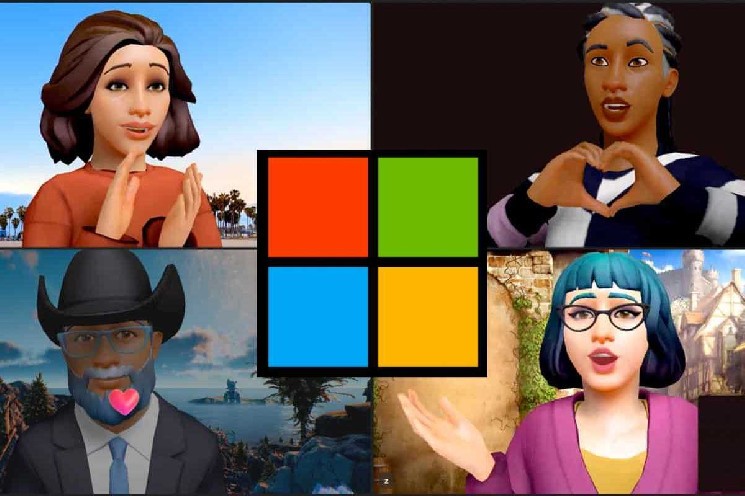Microsoft Releases diffusion Model For Metaverse Avatars

Microsoft created a diffusion model that can transform a single two-dimensional (2D) image of a human face into a three-dimensional (3D) avatar. A team of researchers at Microsoft Research created the diffusion model, which was described in a paper that was published in the journal arXiv.
The 3D avatar can then be used to create a virtual reality (VR) or augmented reality (AR) experience or to simply provide a realistic 3D view of the person for gaming or other purposes.
3D Avatar is based on a machine algorithm
The 3D Avatar Diffusion is built on a machine-learning algorithm known as a diffusion model. Diffusion models can produce new data that is similar to the training data because they are generative models. The ADM is the first diffusion model to be able to create a realistic 3D avatar from a single 2D image, though diffusion models have been used in the past to create 3D images from 2D images.
The researchers used a dataset of more than 200,000 3D face models to train the model. The faces in the dataset came in a wide range of skin tones, haircuts, and facial characteristics. The ADM was then able to create a realistic 3D avatar from a single 2D image. However, after learning the relationship between the 2D image and the 3D face model.
Generative models automatically create 3D Avatars
This study suggests a 3D generative model for the automatic generation of 3D digital avatars. However, they are represented as neural radiance fields with diffusion models. The difficulty in developing the rich features necessary for high-quality avatars stems from the prohibitive memory and processing demands associated with 3D. The roll-out diffusion network (Rodin) is recommended by developers to solve this problem.
Earlier, Bill Gates claimed that his former company was developing Teams office software with 3D avatars and other metaverse-friendly features. Now that Microsoft is working with Mark Zuckerberg and Meta. However, to make the latter’s Workplace social network for businesses compatible with Teams. Also, teams may even have a clear on-ramp to the metaverse.
Also Read: My Neighbor Alice: An Introduction To The Play-To-Earn Crypto Game






 Bitcoin
Bitcoin  Ethereum
Ethereum  Tether
Tether  USDC
USDC  Dogecoin
Dogecoin  TRON
TRON  Cardano
Cardano  Chainlink
Chainlink  Stellar
Stellar  LEO Token
LEO Token  Bitcoin Cash
Bitcoin Cash  Hedera
Hedera  Litecoin
Litecoin  Monero
Monero  Dai
Dai  Cronos
Cronos  OKB
OKB  Ethereum Classic
Ethereum Classic  Gate
Gate  VeChain
VeChain  Cosmos Hub
Cosmos Hub  Algorand
Algorand  KuCoin
KuCoin  Stacks
Stacks  Maker
Maker  Tether Gold
Tether Gold  Zcash
Zcash  Theta Network
Theta Network  IOTA
IOTA  Tezos
Tezos  TrueUSD
TrueUSD  NEO
NEO  Polygon
Polygon  Dash
Dash  Decred
Decred  Synthetix Network
Synthetix Network  Zilliqa
Zilliqa  Qtum
Qtum  0x Protocol
0x Protocol  Basic Attention
Basic Attention  Siacoin
Siacoin  Holo
Holo  Ravencoin
Ravencoin  DigiByte
DigiByte  Status
Status  Enjin Coin
Enjin Coin  Nano
Nano  Ontology
Ontology  Hive
Hive  Waves
Waves  Lisk
Lisk  Pax Dollar
Pax Dollar  Numeraire
Numeraire  NEM
NEM  Steem
Steem  BUSD
BUSD  Huobi
Huobi  OMG Network
OMG Network  Bitcoin Gold
Bitcoin Gold  Ren
Ren  Bitcoin Diamond
Bitcoin Diamond  Augur
Augur  HUSD
HUSD